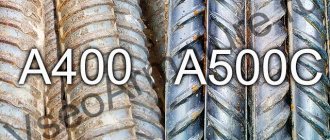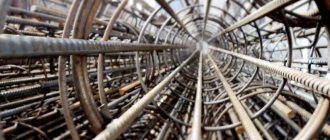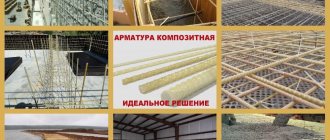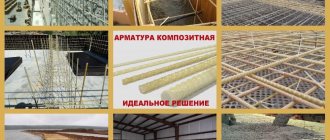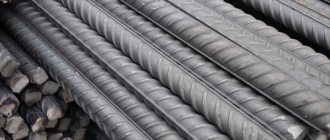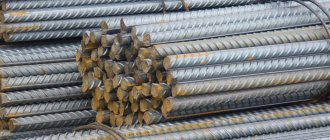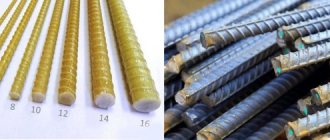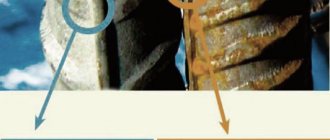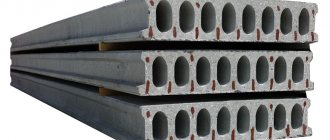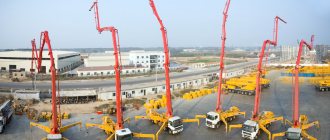One of the materials most used in the construction of reinforced concrete buildings and foundations is class A500C reinforcement. The scope of its application is very extensive - from reinforcing simple reinforced concrete products to strengthening load-bearing structures. Due to the high popularity of the material, it will be useful for anyone interested in construction to learn more about the A500C class of reinforcement.
Production
Fittings of this class are produced under the control of GOST R 52544-2006 and STO-ASChM 7-93. Low-carbon steel grades 35G2S and 35GS are used as the manufacturing material. The carbon content is no more than 0.22%. For the production of A500C, two methods are used: cold drawn and hot rolled. In the first case, wire and rolled reinforcement is created, in the second - rod reinforcement. It should be noted that rolled products of the second type are characterized by higher strength. The raw materials for A500C contain fewer alloying components than analogues, which ensures a more favorable cost of the final product.
Why is she so popular?
Every building material (and construction fittings are no exception) stands the test of time. All options are tested in practice, some become more common, while others become less common. The excellent characteristics of the A500C fittings ensure its stable demand and considerable popularity. Let's list the main advantages:
- low cost;
- high strength and the ability to withstand any type of load - tensile, bending and compression - allows you to use less material, further reducing construction costs;
- a specially developed steel grade eliminates the risk of weak points that fail under significant loads;
- the screw notch adheres well to concrete;
- bending radius of cold fittings up to 180 degrees significantly simplifies the installation process;
- thanks to the special composition and processing of the metal, the A500C reinforcement can be welded, simplifying the installation process and the reliability of the finished frame;
- can last for many years, withstanding low temperatures down to -55 degrees Celsius inclusive.
The table below describes the characteristics of the most common diameters of the S500 fittings:
| Diameter of fittings А500С, mm | Possible length, m | steel grade | Weight per meter, kg |
| 10 | 6-12 | St3SP/PS | 0,617 |
| 12 | 6-12 | St3SP/PS | 0,888 |
| 14 | 6-12 | St3SP/PS | 1,21 |
| 16 | 6-12 | St3SP/PS | 1,58 |
| 20 | 6-12 | St3SP/PS | 2,47 |
| 25 | 6-12 | St3SP/PS | 3,85 |
Knowing the weight of the reinforcement, the most popular diameters and lengths of the produced rods, you can easily select the material that is best suited for a particular object. GOST 52544-2006 will tell you more about the material of A500S reinforcement.
Difference between A500C and A-III
The type of reinforcement that will be used in the construction of a new building is selected at the project development stage. For residential buildings weighing up to 80 tons, A3 rolled steel is mainly used. This category includes fittings A400 and A500C. These classes are often considered the same or very similar, but they have significant differences:
- Scope of application. Both classes are used for repair and finishing, construction, production of reinforced concrete products, creating frames, etc. The difference between A500C and A3 (A400) is that the first class can be used in both loaded and unloaded structures, and the second - in areas of high stress.
- Appearance. Rolled products of class A500C have a profile with crescent-shaped protrusions that do not intersect with the longitudinal ribs. This shape provides higher plastic and strength characteristics. Also, thanks to the profile, the material does not have stress concentrators at the intersections of longitudinal and transverse ribs. Different manufacturers offer different versions of this material, which may differ in the angle of inclination of the crescent-shaped elements in relation to each other and the distance between them.
- Welding capability. A3 reinforcement, produced by the hot-rolled method from high-carbon type 25GS steel, complies with GOST 5781-82. The fluidity index of the product is 400 N/mm2, which is specified in the A400 marking. This material cannot be welded. To connect individual elements, only knitting wire can be used (as fastenings at seams).
We have collected all the main characteristics by which these two classes of rolled metal can be compared in the table below:
Rolled products of class A400 (A-III) can be replaced with A500C without re-calculating the project. Reverse replacement is allowed only in case of additional recalculations. This provides a significant increase in the strength and reliability of the structure, and also increases its service life. By choosing A500C class rental, you can reduce the amount of required material by an average of 10%. Reducing the volume of working reinforcement allows you to reduce the final cost of the project.
Scope of application
As mentioned above, these rods are used in various fields, since their technical properties are very good and the price is relatively low. Therefore it is used:
- When reinforcing load-bearing structures (monolithic construction).
- For the manufacture of simple reinforced concrete structures (monolithic and strip foundations of private houses).
- In the manufacture of reinforced concrete products of various sizes and purposes (floor slabs and others).
The application process is simplified by a large range of products. After all, class A500C reinforcement can have a diameter from 4 to 40 millimeters. Therefore, choosing products that will be the best choice for a particular construction project is usually not difficult. In addition, the material comes in different forms. If the diameter is from 4 to 6 millimeters, then transportation is carried out in the form of skeins. With a diameter of 6 to 12 millimeters, it is transported both in coils and in rods - depending on the capabilities of the manufacturer and the requirements of the client. With a larger diameter, the material is transported only in rods.
conclusions
A500S fittings are the most modern development in the direction of fittings. This class of products differs from others when it comes to the visual component. The structure has no longitudinal ribs; it is complemented by three profiles or a large number of them. If cold forming is used for steel, then the advantage is the use for the production of welded mesh with the absence of scale. In this case, conventional welding with electrodes for connection is prohibited. But even the susceptibility to corrosion can be easily circumvented if you choose the material and construct the structure wisely.
Basic information and terms
The main material is steel, with a carbon content of 22%. Thanks to this number of initial components, the strength characteristics of the final product are improved. Production costs, as well as raw material consumption, are significantly reduced. Fastening between the joints is organized using arc welding.
The scope of application is quite wide:
- For frame connections, when reinforced concrete products are produced.
- For private construction, in the case of monolithic concreting.
The use of the material in practice involves the participation of bending machines.
Such products can withstand tensile loads, this is a positive characteristic. This promotes the use of products for structures with prestressing and thin walls. A universal type of material, one of the most popular. This is the A500 C reinforcement, the steel grade for which is carefully selected.
Reinforcement class coding
For convenience, the designations of fittings reflect its classification. By belonging to a certain class, it is normatively determined where the reinforcement should be used, what its characteristics are, and what grades of steel it is made of.
Outdated class designations are defined as A1-A6, and modern ones - A240-A1000.
When designing or constructing, a specialist will learn the necessary information from the grade of material: class, manufacturing method, diameter, special properties.
Diameters in classes
Class coding with corresponding size ranges of rod diameters in cm.
| Outdated markings | Modern marking | Reinforcement diameter (cm) |
| A1 | A240 | 0,6-4 |
| A2 | A300 | 1-8 |
| A3 | A400 | 0,6-4 |
| A4 | A600 | 0,6-4 |
| A5 | A800 | 0,6-4 |
| A6 | A1000 | 1-2,2 |
In reinforcement, the letter “A” characterizes its production method as hot-rolled (rod); with possible thermal hardening or mechanical hardening by drawing.
Yield strength
Subsequent numbers (after the first letter) indicate the minimum yield strength (YS) in N/mm².
On a note! PT is a mechanical strength characteristic of the plasticity of a material, which determines the performance of reinforcement under load, without deformation and destruction. Simply put, the yield strength shows how much force must be applied to the reinforcement so that after the load is removed, the rod does not straighten, but remains bent.
In strength-of-materials, PT is the stress in a material when, after an elastic (reversible) deformation zone, a plastic (irreversible) change begins in the tensile diagram.
Cracks in reinforced concrete Source mpkm.org
See also: Catalog of companies that specialize in calculation, installation and repair of foundations
Designation in codes of additional technical requirements
After the numbers in the marking, there may be letters that, since 2019, correspond to the characteristics of additional technical requirements. The following letters are listed in the fittings:
- C – welded by different types of welding;
- H – increased plasticity;
- E – high plasticity (seismically resistant);
- K – resistance to corrosion cracking;
- U – endurance to repeated cyclic loads;
- P – requirements for stress relaxation.
Associations not by class
In construction, reinforcement is divided into the following types:
- according to profile (smooth, corrugated);
- by orientation in the product (transverse, longitudinal);
- according to the conditions of use (unstressed, stressed);
- by use (structural, installation, operational).
There are also conventional concepts - “soft” (classes A1, A2, A3) and “hard” (high-strength) reinforcing steel. “Soft” steels have lower strength than “hard” ones. But they have better plastic properties and greater elongation at break.
Example of marking of reinforcement Source dokipedia.ru
Armature A 500
To understand in the classification what class A 500 fittings are, you should consider the history of its appearance. Such reinforcement was made as rolled profiles from steel grade 76 for rail processing, from fabric from the dismantling of Russian Railways.
The reinforcement was made by hot rolling, but its parameters differed from the standardized ones. In accordance with the classification that was outdated at that time, it was not possible to determine whether the A500 fittings were of what class - A1 or A3. We established a suitable class in the TU0933-313-36554501-2014 standard.
The independently selected class A500 from rail steel 76 is a non-weldable rolled product with a periodic profile. Here are some characteristics: carbon content 0.71-0.84%, yield strength min 550 N/mm², rod diameters 10-18 mm, bending angles no more than 30°-45°.
That is, the question of what class of fittings A500 contains the answer - A500 is a separate independent class, different from both A1 and A3.
